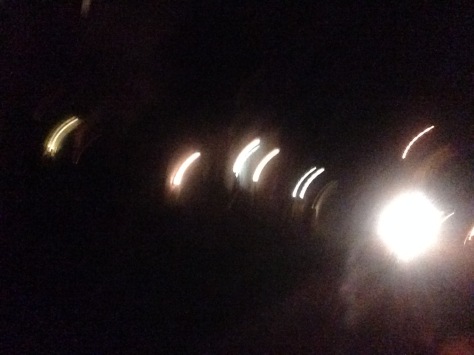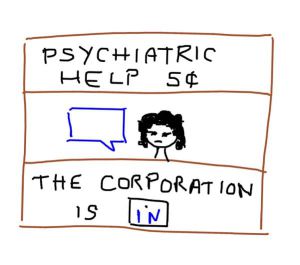I am keeping a research diary about my work editing Cogewea for a couple of reasons:
- I am a white academic working with an Indigenous text, and transparency is key.
- I like input from others.
- Editing this book is complex, and this diary tracks my attempt to edit via Indigenous protocols and practices (such as putting excerpts from Mourning Dove’s correspondence about Cogewea to her editor, Lucullus McWhorter, into the book, thereby reestablishing her voice rather than privileging the editor’s eurocentric approach).
Mourning Dove wrote Cogewea in 1927, the first western written by an Indigenous woman. It’s a cross-cultural story that decolonizes the western, which has been responsible for heinous misrepresentations of Indigenous identity and culture. When I say Mourning Dove decolonized the western, I mean she revised the ideological goals of the western, disabling, countering resisting the goals of this genre (the most popular fictional genre, IMO, ever produced) to reinforce white supremacy, free market capitalism, rugged individualism, anti-feminism (sometimes misogyny), and, yes, toxic masculinity. It’s a remarkable novel.
BUT, her novel was edited through proprietary, individualist, and colonial practices endemic to western publishing. This project is working towards building a collaborative edition of the novel that follows Indigenous editing practices as per Indigenous editors and scholars, particularly Dr. Greg Younging and Kateri Akiwenzie-Damm.
Who still reads Cogewea? This novel is mainly read by undergrads. This is why the project is so crucial. The only edition still in print was published in 1981 and its paratext spreads multiple myths that some (like me) might call racist (e.g salvage ethnography, Myth of the Vanishing Indian, and many more).
(Side note – I was going to link “salvage ethnography” to the Wikipedia article on the subject but it kind of furthers the ends of salvage ethnography rather than position it as a colonizing methodology – beware).
So far, I have applied for money, so I can keep building an editing team – it’s a massive project. I also must consult with the family before anything ever, ever is published. I have received a huge amount of help from The People and the Text (thank you!), but now I need to build the team for the print edition (which needs to go out first to give instructors another option to order).
If you are wondering why a new edition is necessary, here is just a small sample of the problems with the 1981 edition followed by edits to correct the original editor, Lucullus McWhorter’s interventions.
Dexter Fisher tells us in the introduction that the novel may be “wrenched in parts” and written in “unnatural language,” but the novel should be heralded for the “preservation of those beliefs and stories of the Okanogan culture that may have disappeared” (Fisher xxvi). Here, the introduction places Okanagan culture as in danger of vanishing and in need of preservation. This way of characterizing Indigenous stories as preserving culture rather than teaching how to “think, feel, and ‘be’” is a colonial misrepresentation of Indigenous knowledge (see Jo-Ann Archibald’s Indigenous Storywork).
As promised, the following excerpts show how the old and new editions compare.
The first excerpt is from the 1927 and 1981 editions by Mourning Dove’s Euroamerican editor, Lucullus McWhorter. In this excerpt, Alfred Densmore – the Euroamerican easterner, who has come west ostensibly for adventure, but ends up wanting to steal the eponymous hero’s land – has been hunting and gives Cogewea’s grandmother game to befriend her. However, the grandmother knows what Densmore is up to and is concerned that her granddaughter may fall into Densmore’s trap:
Densmore often went shooting on the big flats where numerous small lakes were in evidence. To the surprise of all, he proved a successful hunter and bagged a goodly number of both ducks and prairie chickens along with the occasional goose. Badger, a noted wolf-hound and Bringo, were his constant companions on these excursions, ofttimes chasing down a wily coyote and the fleet footed jack rabbit. Densmore had also become handy with the rod, bringing home fine strings of fish. Stemteema was kept bountifully supplied with these delicacies, nor did the sportsman forgo an opportunity of ingratiating himself in her favor. But the ancient women received the gifts with stoic indifference and with doubtful gratitude. Perhaps it was more to please Cogewea, that she accepted the offerings, regarding them as part of her daily food supply. The girl sometimes accompanied the donor in these presentation visits, acting as interpreter. The keen-witted grandmother discerned that her grand child was growing more fond of the hated Shoyapee. (1)
(1) Sho-yah’_pee: denoting “white man.” The etymology is of foreign coinage, and in usage with but slight variation among all the northwestern tribes. The form here given and used throughout this volume is of the Spokanes as being slightly more phonetic than the Okanogan so-yah’-pen. It is the sho-yah’-poo of the Nez Perce, and Yakimas; and the whe-nee_tum of the Victorians, B.C. An intelligent Yakima told me of its introduction among his people. It was brought by the first Jesuistic missionary from some tribe not recalled, where it was applied to the white man, comparing him to the hog because of his greedy nature and proneness to “eat up everything he sights.”
Note how McWhorter offers a linguistic analysis of the word “Shoyapee” without noting who he consulted or where he found this information, which positions McWhorter as expert rather than a cultural outsider who needs to consult with Indigenous knowledge, Elders, and community members. He does cite the usage of the word from a member of the Yakima but has to qualify that this Yakima tribal member is “intelligent,” which implies that not all are (jeez, McWhorter). This note is a prime example of editing as part and parcel of a Eurocentric knowledge system. Here is a draft of the same section for the new teaching edition of Cogewea, but Lucullus McWhorter’s original annotation is revised via Dr. Armstrong’s Okanagan knowledge:
Densmore often went shooting on the big flats where numerous small lakes were in evidence. To the surprise of all, he proved a successful hunter and bagged a goodly number of both ducks and prairie chickens along with the occasional goose. Badger, a noted wolf-hound and Bringo, were his constant companions on these excursions, ofttimes chasing down a wily coyote and the fleet footed jack rabbit. Densmore had also become handy with the rod, bringing home fine strings of fish. Stemteema was kept bountifully supplied with these delicacies, nor did the sportsman forgo an opportunity of ingratiating himself in her favor. But the ancient women received the gifts with stoic indifference and with doubtful gratitude. Perhaps it was more to please Cogewea, that she accepted the offerings, regarding them as part of her daily food supply. The girl sometimes accompanied the donor in these presentation visits, acting as interpreter. The keen-witted grandmother discerned that her grand child was growing more fond of the hated Shoyapee. (1)
(1) Shoyapee
Mourning Dove’s collaborator, often called her editor, Lucullus McWhorter states frankly in his notes for the novel that the meaning of this word is shared across tribes of the Pacific Northwest: the word “shoyapee” describes white people as greedy hogs who consume everything in their path. Although McWhorter genders the word as “he,” Dr. Jeanette Armstrong, Okanagan scholar, activist, and storyteller, explains that gender is not an issue in oral stories because “it is the role that provided a focus and is embodied in a relationship and acts to reference the characteristics represented in the captikʷɬ or oral story” Armstrong agrees with McWhorter about the definition of the word but adds that the Shoyapee is also a representation of the malevolent greed and arrogance endemic to the colonial process, and is, therefore, not necessarily a racial epithet to be applied to an individual (204).
The above excerpt decenters McWhorter as the authority figure and repositions Indigenous knowledge as key to understanding the text. This example shows how Indigenous editing practices can decolonize a text from its entrapment in Eurocentric knowledge systems (I hope, anyways).
This is where we are headed. Again, BIG thank you to The People and the Text and Dr. Jeanette Armstrong.
Canadian Association for the Study of Discourse and Writing/Association Canadienne de Rédactologie


 Ok, let’s talk.
Ok, let’s talk.